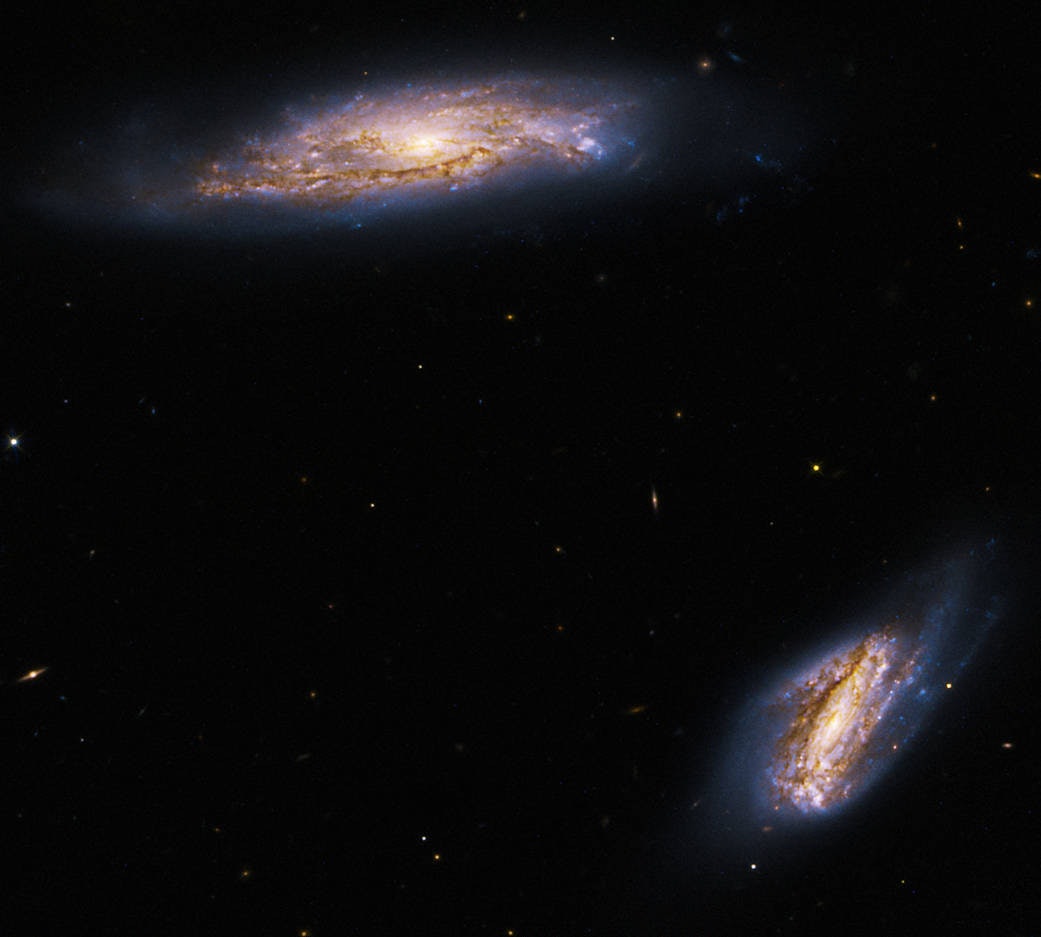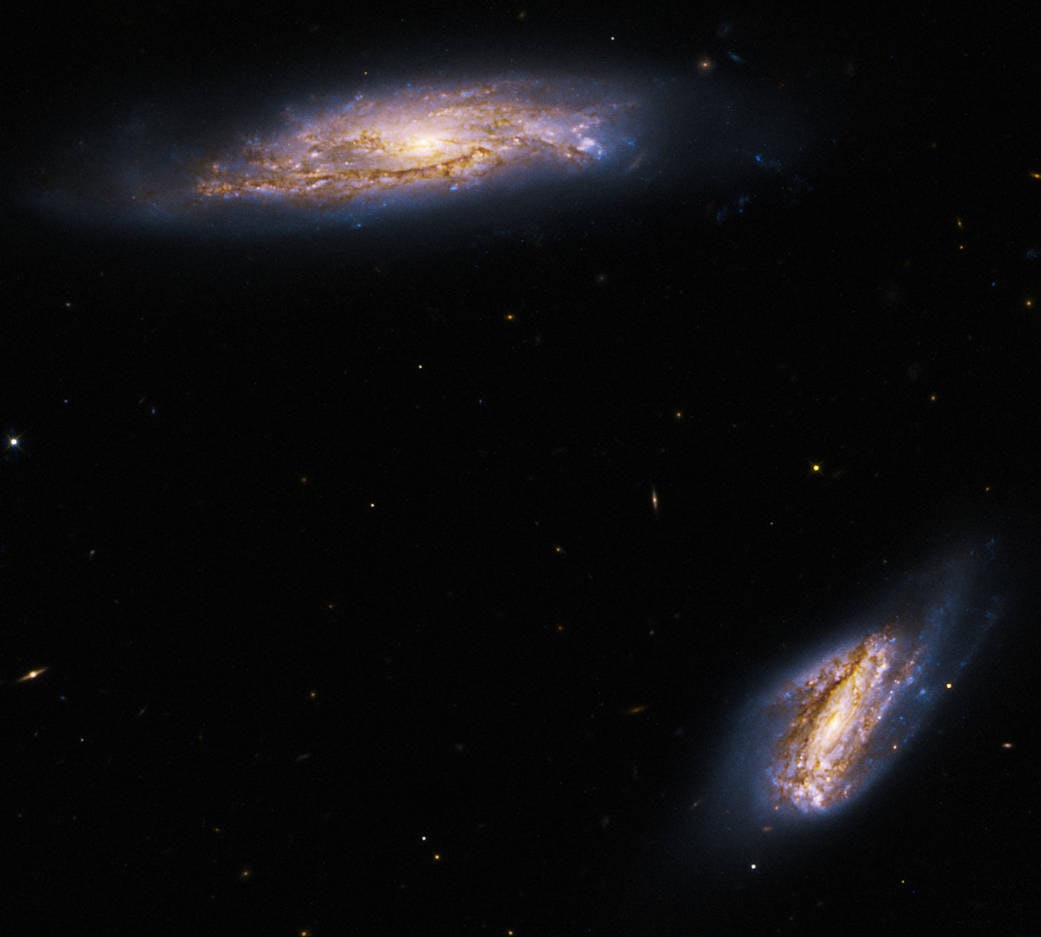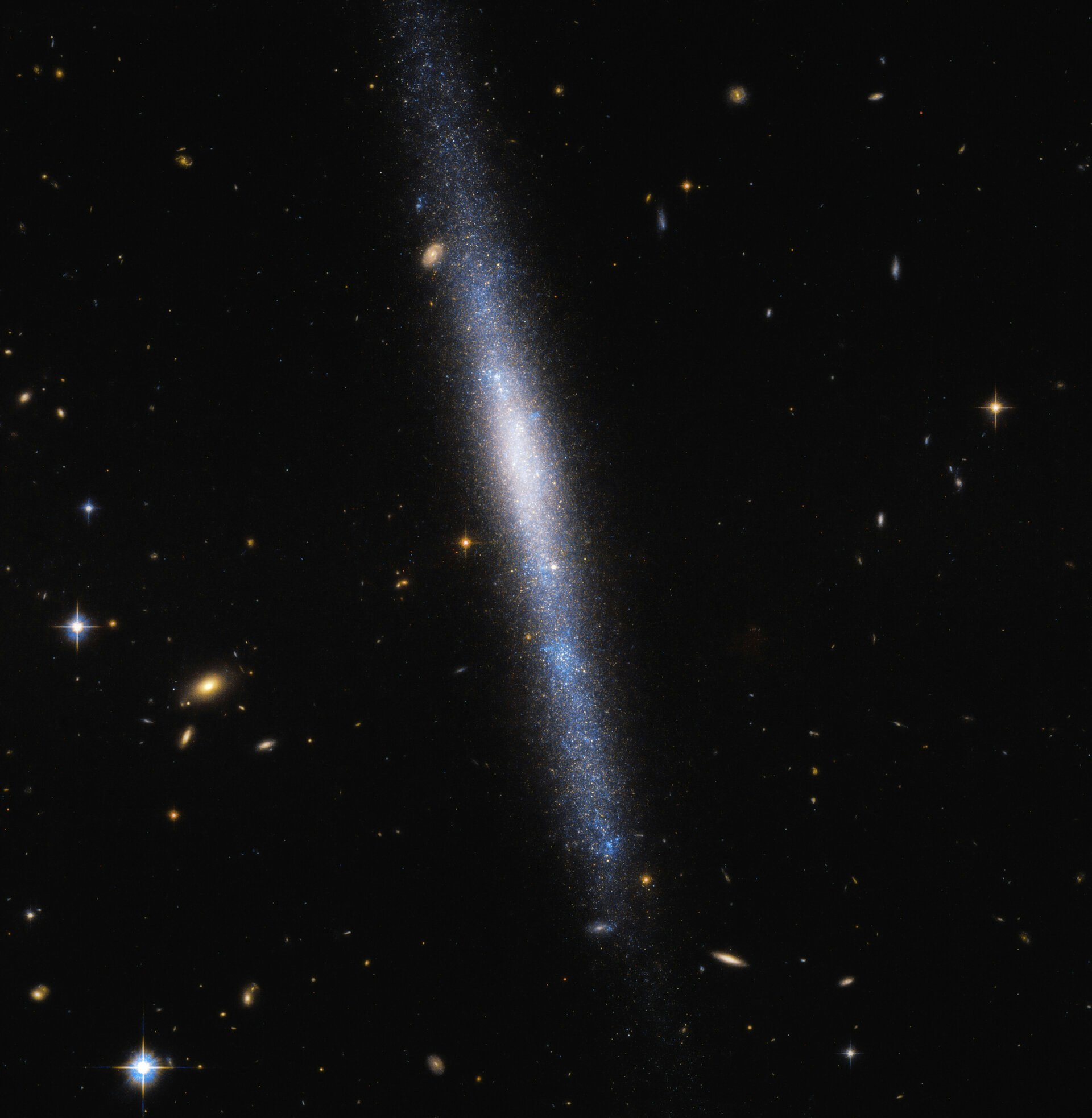
NASA’s Hubble Space Telescope is seeing double.
Not one but two bright galaxies can be seen from a hefty 275-million-light-year distance, illuminating the mechanical eyes of the 32-year-old Hubble Space Telescope. The galaxies are collectively known as Arp 303 and they share the spotlight in Hubble’s newest image, which NASA published last Friday. The vibrant appearances of the dynamic star-forming regions within these galaxies — individually known as IC 563 and IC 564 — are among the many reasons astronomers continue relying on Hubble’s observational capabilities.
Their radiance rushes across the universe at the speed of light. However, since the pair is so incredibly far away, this image actually shows what these galaxies looked like 275 million years ago. At that time, Earth was populated by scary predators like Dimetrodon that predate the dinosaurs by several million years.

This image is also a composite. The galaxies glitter in several colors thanks to Hubble’s unique instruments which collect data from different observations and stitch them all together. The telescope’s Wide Field Camera 3 gathered infrared light from Arp 303, contributing to the image’s regions seen in red, orange, and green. Another instrument, called the Advanced Camera for Surveys, captured visible light data, seen here in blue.

Arp 303 is found within the constellation Sextans. This slice of the night sky is home to other dazzling galaxies, such as UGCA 193 which Hubble’s team calls a “waterfall of stars.”
The powerful peepers of NASA’s next-generation James Webb Space Telescope will continue Hubble’s tradition of spying into the universe’s past when it takes its “first light” this summer.







